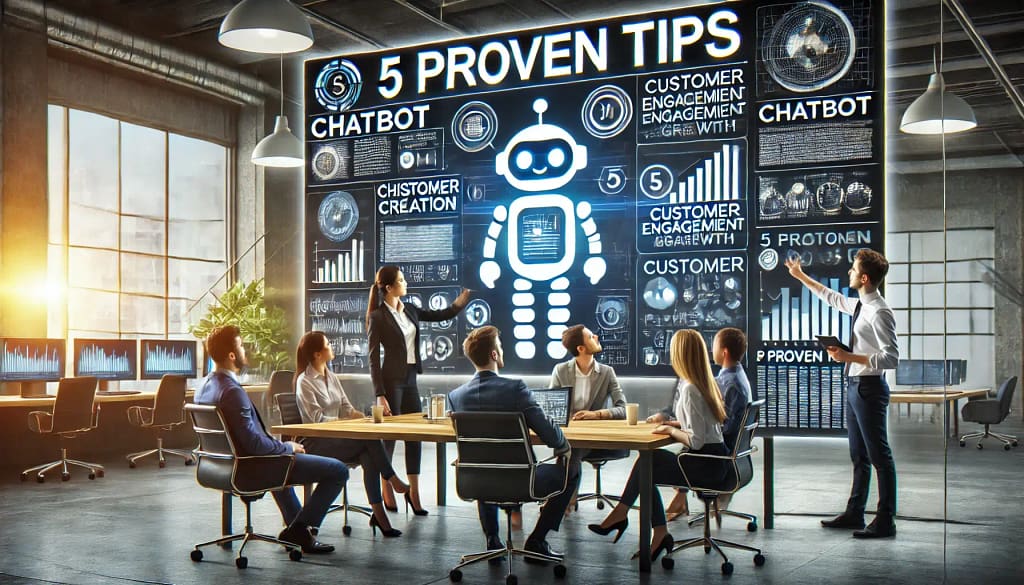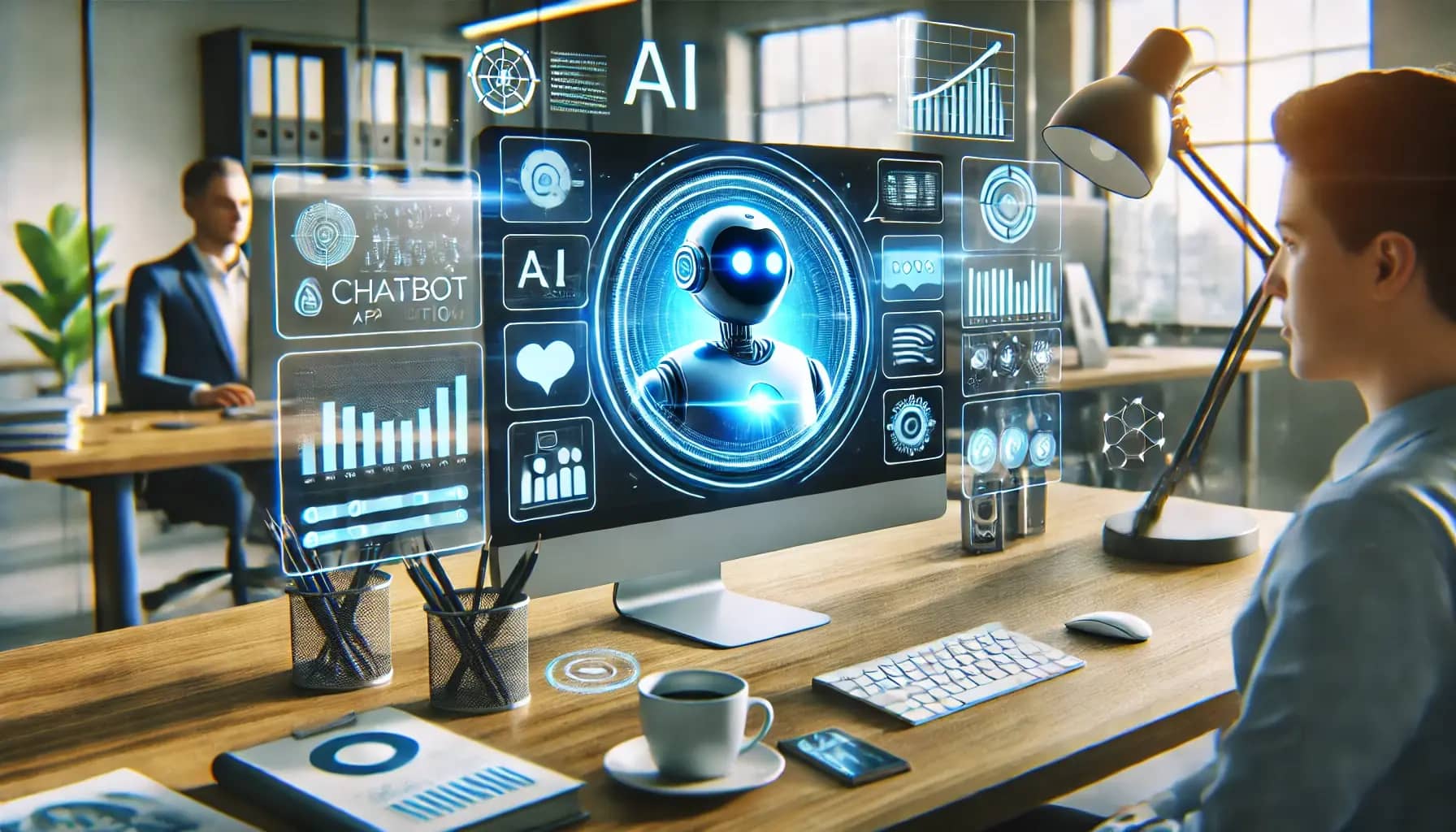Ever wonder how to create a chatbot that truly engages users? Chatbot creation is transforming customer service and user interaction. With the right tools and strategies, anyone can design an efficient and responsive chatbot. This guide will walk you through the essentials of building a chatbot, from initial planning to deployment. Discover the benefits of chatbots and how they can enhance your business operations. Ready to dive into the world of chatbot creation? Let’s get started!
Key Takeaways
- Start with a Clear Plan: Before diving into building, outline your chatbot’s purpose, target audience, and key functionalities to ensure it meets user needs.
- Use the Right Tools: Choose chatbot development platforms that align with your technical skills and project requirements for a smoother creation process.
- Focus on SEO: Implement SEO strategies to enhance your chatbot’s discoverability and improve user engagement through optimized interactions.
- Incorporate Advanced Features: Add advanced features like natural language processing and machine learning to make your chatbot more intuitive and effective.
- Test Thoroughly: Regularly test your chatbot to identify and fix issues, ensuring it provides a seamless user experience.
- Monitor and Update: Continuously monitor your chatbot’s performance and update it based on user feedback and changing needs.

Understanding Chatbot Creation
Basics and Importance
Chatbots automate customer service and engagement. They handle repetitive tasks, allowing human agents to focus on complex issues. This automation saves time and reduces costs.
Businesses find chatbots cost-effective. They require less manpower and can handle multiple queries simultaneously. This boosts efficiency.
Chatbots improve user experience by being available 24/7. Customers get instant responses anytime. This increases satisfaction and loyalty.
Types of Chatbots
Rule-based chatbots follow predefined rules. They use decision trees to provide answers. These are ideal for simple tasks.
AI-powered chatbots learn from interactions. They use machine learning and natural language processing. These are better for complex conversations.
Choosing the right type is crucial. Simple chatbots suit basic inquiries. Conversational AI chatbots meet higher customer expectations.
Chatbots in Business
Chatbots transform customer service by providing quick responses. In sales, they guide users through purchasing decisions. Marketing uses them for personalized recommendations.
Successful implementations exist in many industries. Retailers use chatbots for product suggestions. Banks employ them for account inquiries.
The ROI from chatbots is significant. They increase customer satisfaction and reduce operational costs. Businesses see improved engagement and loyalty.
Planning Your Chatbot Creation
Define Goals
Setting clear objectives is crucial. Goals help determine what the chatbot must achieve. Common goals include reducing response time, handling FAQs, and generating leads.
Goal setting influences the design and development of chatbots. For example, a goal to reduce response time will require efficient algorithms. Handling FAQs might need a database of common questions and answers.
Choose the Right Platform
Choosing the right platform is essential. Popular platforms for chatbot creation include Dialogflow, Microsoft Bot Framework, and IBM Watson. Each has its own strengths.
Dialogflow is user-friendly and integrates well with Google services. Microsoft Bot Framework offers extensive customization. IBM Watson excels in natural language processing.
Select a platform that aligns with your business’s technical resources. Consider scalability for future growth. Scalability ensures the chatbot can handle increased interactions as the business expands.
Design Conversations
Designing conversations requires creating natural and engaging dialogues. Map out user intents to guide the flow of conversation.
User intents are actions users want to perform. Designing conversational flows based on these intents makes interactions smoother.
Personality and tone play a vital role in enhancing user experience. A friendly tone can make the bot more relatable. Engaging dialogues keep users interested and satisfied.

Building the Chatbot Creation
Selecting Tools
When diving into chatbot creation, selecting the right tools is essential. You should consider several key criteria to ensure your chatbot performs effectively. First and foremost, **AI capabilities** are crucial. A chatbot with advanced AI can understand and respond to user queries more accurately, providing a seamless user experience. This is especially important as it can significantly enhance customer satisfaction and engagement.
Ease of use is another critical factor, particularly for beginners in chatbot creation. Tools that offer intuitive interfaces and straightforward functionalities can make the development process much smoother. This allows even those without extensive technical knowledge to build and deploy effective chatbots.
Additionally, **support from the tool provider** is indispensable. Having access to reliable customer support can help you resolve any issues promptly, ensuring your chatbot remains functional and efficient. This support can come in various forms, such as comprehensive documentation, responsive customer service teams, or active community forums.
By carefully evaluating these aspects—AI capabilities, ease of use, and provider support—you can select the best tools for successful chatbot creation.
Recommend tools that offer robust analytics and customization. Analytics help track performance and improve the chatbot over time. Customization options allow tailoring the chatbot to specific business needs.
Ensure compatibility with existing business systems. This ensures seamless integration and better functionality.
Writing Scripts
Scripting effective conversations is essential. Anticipate user queries and craft appropriate responses. This makes the chatbot more engaging and helpful.
Regular updates and revisions are necessary. User feedback helps identify areas for improvement. Adjust scripts based on interactions to keep them relevant.
Integrating AI
AI enhances chatbot functionality through natural language processing (NLP) and machine learning (ML). NLP allows chatbots to understand user input better. ML enables chatbots to learn from interactions and improve over time.
Benefits of AI integration include improved understanding of user requests. Personalized interactions make the chatbot more effective.
Consider privacy and security when using AI. Protect user data and ensure compliance with regulations.
SEO Strategies for Chatbots
Keyword Research
Understanding what users are searching for is crucial. Effective keyword research helps in creating a successful chatbot strategy. Incorporate relevant keywords into chatbot scripts to improve discoverability. Tools like Google Keyword Planner and SEMrush can assist in finding the right keywords. Use these tools to identify popular search terms and trends.
Content Optimization
Optimizing chatbot content ensures clarity and relevance. Keep interactions engaging and informative by using concise language. Regularly update the content based on user feedback and changing needs. This keeps the chatbot fresh and useful. Employ strategies like A/B testing to find the best-performing scripts.
User Experience
Designing chatbots with user-friendly interfaces is essential. Ensure intuitive navigation for better user experience. Response time and accuracy greatly impact user satisfaction. Personalization enhances the interaction, making users feel valued. Tailor responses based on user data to improve engagement.
Performance Tracking
Track key metrics such as engagement rates, resolution time, and user satisfaction. Analyzing these metrics helps identify areas for improvement. Tools like Google Analytics and Chatbot performance platforms can aid in this process. Regularly monitor these metrics to ensure the chatbot meets user expectations.

Advanced Chatbot Features
Personalization
Chatbots can deliver personalized experiences through user data analysis and segmentation. They analyze user interactions to understand preferences and behaviors. This allows them to tailor responses and recommendations.
Personalization increases user engagement and loyalty. Users feel understood and valued. This leads to higher satisfaction and repeat interactions.
Respecting user privacy is crucial. Chatbots must comply with data protection regulations like GDPR. Always inform users about data usage and obtain consent.
Analytics and Insights
Analytics play a key role in understanding user behavior. They track interactions, identify trends, and highlight common issues. These insights help businesses improve their services.
Insights gained from chatbot interactions can inform business strategies. Companies can make data-driven decisions. This leads to better customer service and operational efficiency.
Actionable analytics are important for continuous improvement. Businesses should use these insights to refine chatbot functionalities regularly.
Continuous Learning
Chatbots need to learn from interactions to improve over time. Machine learning algorithms enable chatbots to adapt to new queries and behaviors. They become smarter with each interaction.
Regular updates and maintenance are essential. This ensures chatbots remain relevant and effective. Regularly updating the chatbot’s knowledge base keeps it accurate.
Final Remarks
You’ve now got a solid grasp on creating chatbots, from planning to advanced features. By following these steps, you’re well on your way to building a powerful tool that can enhance user engagement and boost your SEO strategy. The journey from understanding to execution is crucial, and you’ve tackled it head-on.
Don’t stop here. Dive deeper into refining your chatbot’s capabilities and stay updated with the latest trends. Your next big step? Start building and experimenting. Share your experiences and learn from others in the community. Ready to revolutionize your user interaction? Get started now!
Frequently Asked Questions
What is a chatbot?
A chatbot is software that simulates human conversation. It can be used for customer service, information retrieval, and more.
How do I start planning my chatbot creation?
Begin by identifying your goals and target audience. Outline the tasks you want your chatbot to handle.
What tools are needed to build a chatbot?
You can use platforms like Dialogflow, Microsoft Bot Framework, or Chatfuel for chatbot creation. These tools offer user-friendly interfaces and powerful features.
Why is SEO important for chatbots?
SEO helps your chatbot appear in search results, increasing visibility and engagement. It drives more traffic to your site.
What are some advanced features for chatbots?
Advanced features include natural language processing (NLP), machine learning integration, and personalized responses. These enhance user experience.
Can chatbots improve customer service?
Yes, chatbots provide instant responses and 24/7 support. They can handle common queries, freeing up human agents for complex issues.
How often should I update my chatbot?
Update regularly based on user feedback and performance analytics. This ensures your chatbot remains effective and relevant.






